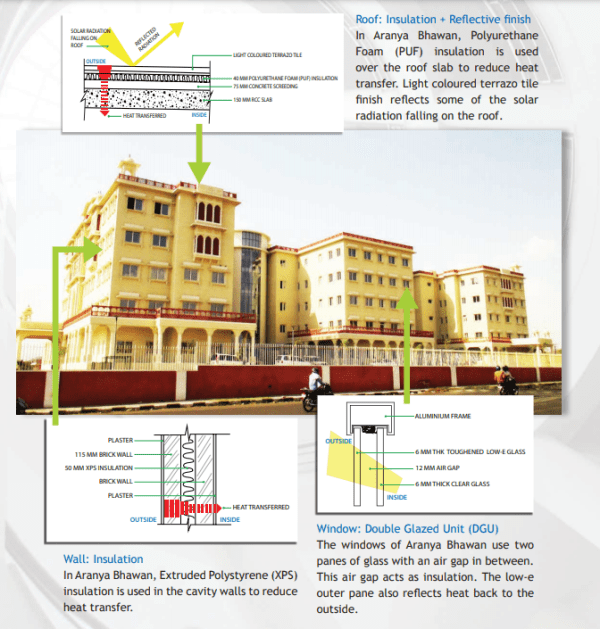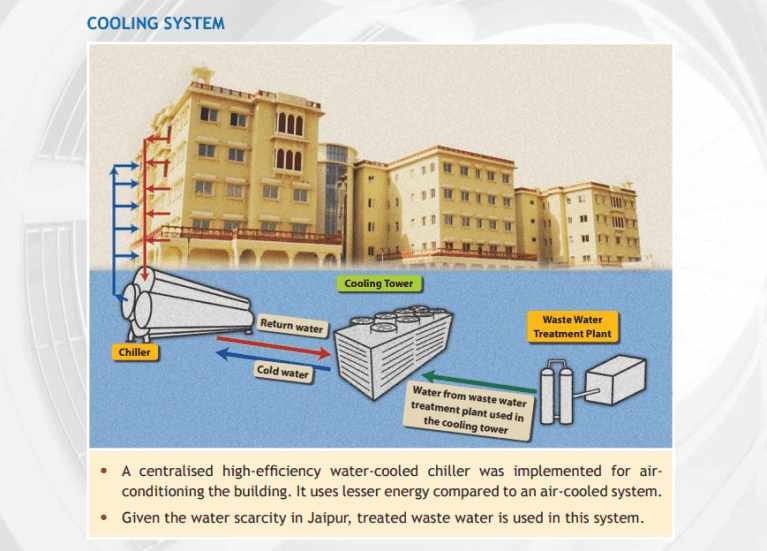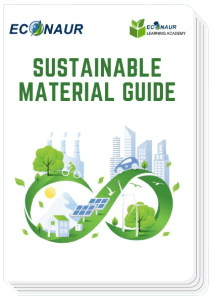Rajasthan’s First ECBC Compliance Building – Aranya Bhawan
Energy Efficiency is a word we often heard to save the energy and conserve it, Ministry of Power initiated and formed BEE (Bureau of Energy Efficiency) was formed and its function is to develop programs which will increase the conservation and efficient use of energy in India.
It was formed after the Energy Conservation Act 2001 that was initiated by Govt. of India to promote and take care the most critical topic that is Energy Conservation.
At first BEE’s Main function was to promote Energy Efficiency and develop awareness about Energy Conservation among the people, initially they come up with giving the standards and ratings to different electronic equipment on the basis of their energy consumption, But later on with the increasing Green Building Movement in India they realised the need for Energy Efficient Buildings in India and how it will be the need of the future.
Energy Conservation Building Code (ECBC) was initiated by Bureau of Energy Efficiency, Ministry of Power in the year 2007 to Promote Energy Efficient Buildings in India. Initially, the Buildings which needed to be made according to ECBC were Buildings having a connected load of 500 KW or more but now the Code is applicable to buildings or building complexes that have:
- Connected Load in excess of 100kW
- Contract Demand in excess of 120 kVA
- Recommended for all buildings with conditioned area >500 m2.
The objective of ECBC is to provide minimum requirements for energy-efficient design and design of buildings and their systems. ECBC encourages energy efficient design or retrofit of buildings so that it does not constrain the building function, comfort, health, or the productivity of the occupants. ECBC also mandates that the building has appropriate regard for economic considerations. The code sets clear criteria for builders, designers, and architects to integrate renewable energy sources in building design through the inclusion of passive design strategies.
The building systems in which ECBC is applicable are:
- Envelope of building – Building envelope, including thermal performance requirements for walls, roofs, and windows
- Heating, Ventilation and Air Conditioning (HVAC) – HVAC system, including energy performance of chillers and air distribution systems.
- Service hot water and pumping – Water heating and pumping systems, including requirements for solar hot-water systems.
- Lighting – Lighting system, including daylighting, and lamps and luminaire performance requirements.
- Electrical power – Electrical system
This Year an Energy Conservation Building Code 2017 (ECBC 2017) was launched by Minister of Power Mr. Piyush Goyal on 20th June 2017. ECBC 2017 aims to optimise energy savings with the comfort levels for occupants. The code aims to achieve energy neutrality in commercial buildings.
Apart from the current and futuristic advancements in building technology, the new code takes into account market changes and energy demand scenario of the country. The code has been set in such a way that it will set a benchmark for Indian buildings to be amongst some of the most efficient globally.
To be ECBC-compliant, the new buildings should be able to demonstrate minimum energy savings of 25%. Energy savings of 35% and 50% will enable the buildings to achieve higher grades like ECBC plus or super ECBC status respectively.
The adoption of ECBC 2017 is expected to achieve a 50% reduction in energy use by 2030 which will translate into energy savings of about 300 Billion Units by the year 2030. It will result in expenditure savings of Rs 35,000 crore and a reduction of 250 million tonnes of CO2.
So let us Understand what are the benefits Involved for ECBC Compliant Buildings
- Reduce energy consumption;
- Reduce CO2 emissions;
- Lower costs through energy savings;
- Accelerate deployment of energy-efficient technologies.
- Use of Energy Efficient Equipments.
- Awareness and importance of Energy Conservation.
- Better use of Natural Resources
First ECBC Complaint Building of Rajasthan :
Inaugurated on March 2015, Aranya Bhawan is the Head office of Rajasthan Forest Department.
It is Rajasthan’s First ECBC Compliant Building in a traditional look with all the energy consumption practices in it. The Energy Performance Index of the Building is 43 kWh/m2/year.
Measures used in the Aranya Bhawan

Cooling System in Aranya Bhawan









